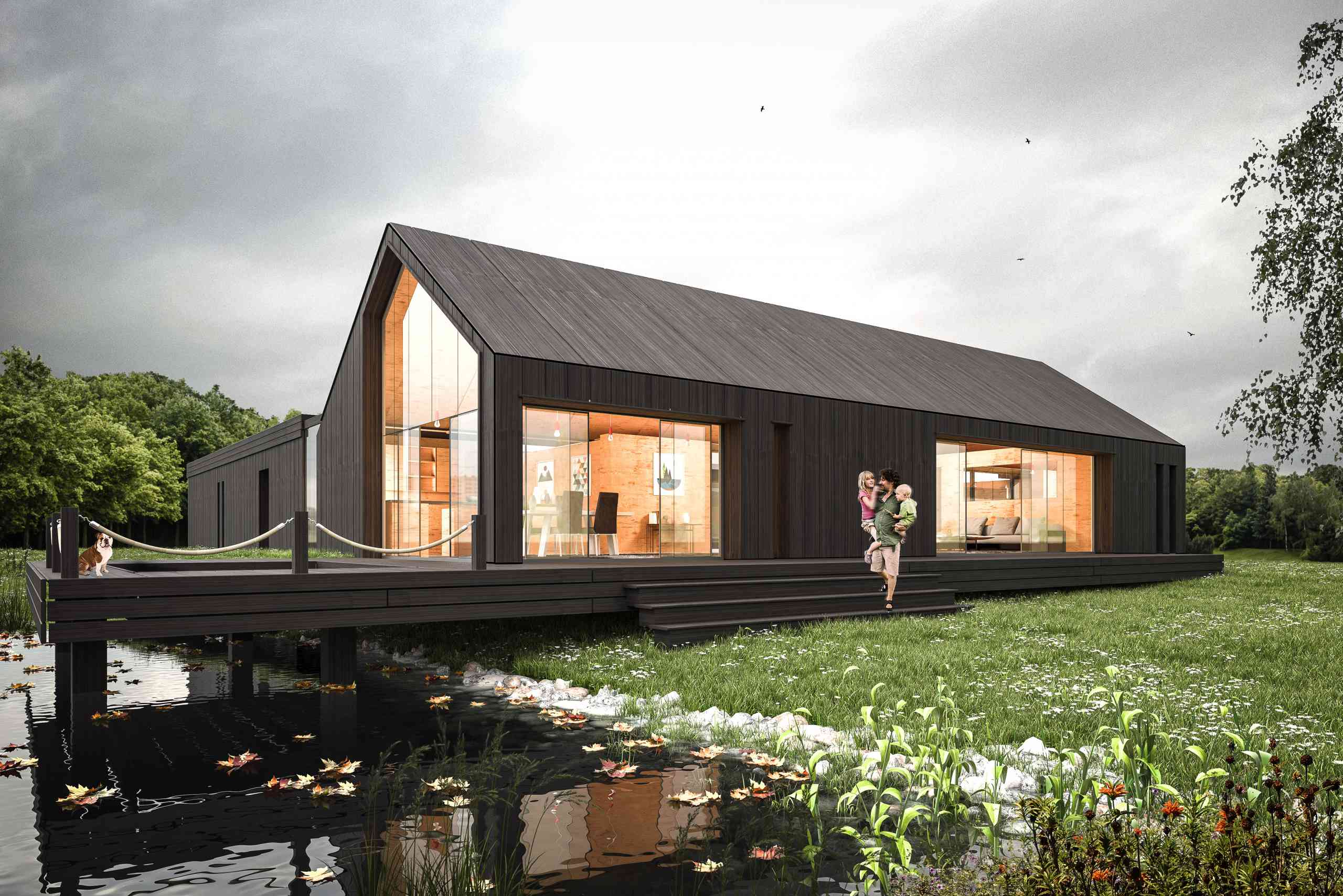Self-building is becoming increasingly popular in the UK. Government incentives such as the Help to Build Loan have been recently introduced, to make the self-build process easier and more affordable, with an aim help to ease the affordable homes shortage in the UK.
Design above by Edward, architect from Nottingham, East Midlands. Click here to see more and shortlist his studio for your home project.
Aside from the societal benefits of increasing housing stock in the UK, the personal advantages are:
- You will have a home that is designed to your style and functional requirements.
- Sustainable living is much more attainable and affordable in a self-build house than retro-fitting an existing one.
- It can be tailored to your budget, and often less expensive than buying an existing house.
1. Find the right plot
This is usually the first and probably the most critical decision in terms of gaining planning permission.
How much does a building plot cost?
The price of plots usually depends on the housing market and desirability of a particular location. Therefore, the costs can vary significantly, but you can be assured that the value of the finished house will also reflect its location.
Where to look?
Get on your local authority’s self-build register
First off, register on your council’s self-build register and see if there are other Community Land Trust/self-build schemes in the area. This might help you if there are but it also shows the government how many people want to build their own house and so can help change policy too.
Plot finder websites
The first and most obvious place to look are the online listings. See our article reviewing these plot finder sites: Which plot finder website is best for your self-build?
Make sure you are clear what planning permission is attached to each plot before making an offer. For many building plots, the owner will have already obtained permission in principle or outline planning permission.
Identify plots yourself
If you have narrowed down your location, driving or walking around an area is a great way to identify potential building plots. Use a map and do some simple desktop research as you go. Making your own personal map on Google Maps is a great way of marking potential plots, where you can add notes etc and share with others.
Divide plots
You might be thinking of an existing plot that you/your family own. If you or your family have a property on some land that is large enough to be subdivided, this can be a great way to speculatively obtain planning permission.
Before purchasing a plot, we recommend speaking to the local authority and paying for pre-application advice. This is also a good time to get an architect on board, who can look at the site with you to discuss design opportunities and constraints.
2. Sustainable design and technology
Considering sustainable design and technology throughout the design process will not only will be good for the planet and your energy bills, but also give you extra points in planning terms. There are minimum sustainability requirements for new build houses but aiming to go beyond this will be a big bonus for your overall planning application.
3. Sympathetic design
Having the right architect will be fundamental to achieving planning permission. Good, sympathetic design is at the core of planning policy and how it is presented is also key to gaining consent.
4. Find the right architect
We work with 100s of architects over the UK. Once you’ve posted your job, we’ll quickly match them to your requirements and see who’s interested. After you post your project you can choose up to three interested architects for a consultation. And it’s all completely free!




